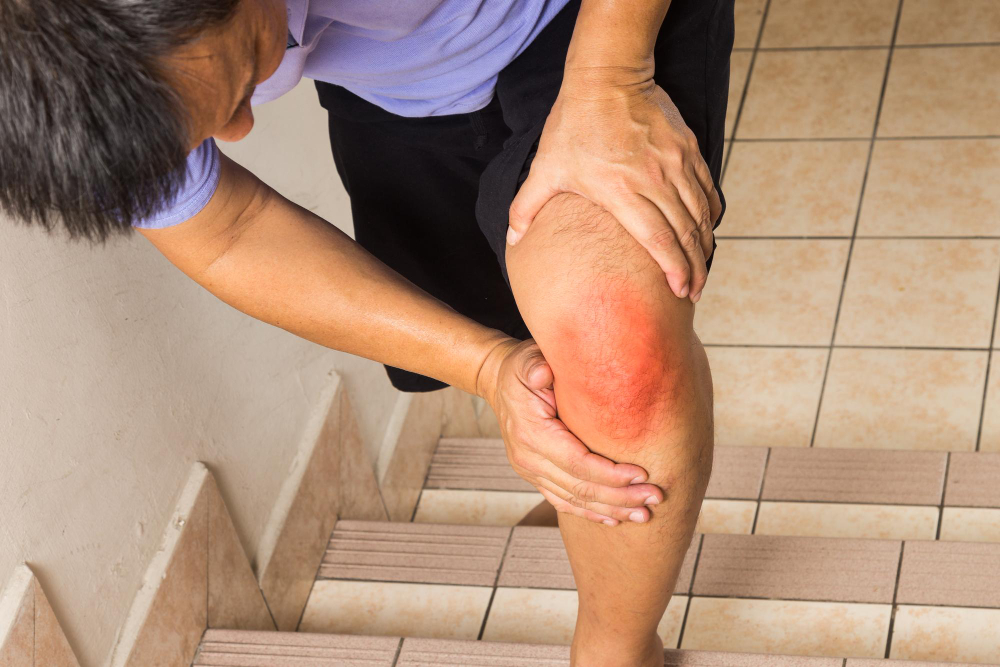A ligament tear is a common injury that affects many people, especially those who play sports or have active lifestyles. Ligaments are strong bands of tissue that connect bones and help keep joints stable. When a ligament tears, it can cause pain, swelling, and trouble moving the joint. This blog will explain ligament tear symptoms, causes, diagnosis, treatment options, and prevention tips. We will also discuss when to see a doctor for a ligament injury.
Symptoms of Ligament Tear
Recognizing the signs of a ligament tear is important. Early treatment can help prevent further damage. Common symptoms include:
Pain: You may feel sharp or sudden pain in the affected joint.
Swelling: The area around the joint often becomes swollen soon after the injury.
Bruising: Sometimes, you might notice bruising or discoloration near the joint.
Instability: The joint may feel loose or give way when you try to use it.
Limited movement: It can be hard to move the joint as you normally would.
Popping sound: Some people hear or feel a pop at the time of injury.
Causes of Ligament Tear
Ligament tears often happen during activities that put stress on the joints. For example, sports injuries are a leading cause. However, other factors can also increase your risk. Main causes and risk factors include:
Sudden twists or turns: Quick changes in direction can strain ligaments, especially in the knee or ankle.
Direct impact: Falls or blows to the joint may cause a ligament injury.
Overuse: Repeating the same movement can weaken ligaments over time.
Poor conditioning: Weak muscles around the joint make ligament tears more likely.
Improper technique: Using the wrong form during exercise or sports can increase risk.
Previous injuries: If you have had a ligament tear before, you are at higher risk for another.
Diagnosis of Ligament Tear
Doctors use several methods to diagnose a ligament tear. First, they will ask about your symptoms and how the injury happened. Next, they will perform a physical exam. During this exam, the doctor will check for swelling, tenderness, and joint movement. In many cases, imaging tests help confirm the diagnosis. These may include:
X-rays: While X-rays do not show ligaments, they can rule out broken bones.
MRI (Magnetic Resonance Imaging): This test gives a clear picture of soft tissues, including ligaments.
Ultrasound: Sometimes, doctors use ultrasound to see ligament injuries in real time.
According to the CDC and orthopedic journals, early diagnosis leads to better outcomes and faster recovery.
Treatment Options for Ligament Tear
Treatment depends on the severity of the ligament injury. For mild tears, non-surgical options often work well. However, severe tears may need orthopedic surgery. Common treatments include:
Rest: Avoid activities that cause pain or stress the joint.
Ice: Applying ice packs can reduce swelling and pain.
Compression: Wrapping the joint with a bandage helps control swelling.
Elevation: Keeping the injured area raised can also help reduce swelling.
Pain relief: Over-the-counter medicines like acetaminophen or ibuprofen may ease discomfort.
Physical therapy: Exercises help restore strength and movement.
Braces or supports: These devices protect the joint as it heals.
Surgery: In some cases, doctors repair or reconstruct the torn ligament. Surgery is more common for severe tears or when other treatments do not help.
Always follow your doctor’s advice for the best results.
Prevention and Recovery Tips
Preventing ligament tears is possible with a few simple steps. Likewise, proper care can speed up recovery. Here are some helpful tips:
Warm up before exercise or sports.
Use correct techniques during activities.
Wear proper footwear and protective gear.
Strengthen muscles around your joints with regular exercise.
Stretch to keep your joints flexible.
Listen to your body and rest if you feel pain.
Follow your physical therapist’s instructions during recovery.
According to the WHO, staying active and strong lowers your risk of ligament injuries.
When to See a Doctor
Sometimes, a ligament tear needs medical attention right away. You should see a doctor if:
You cannot move the joint or put weight on it.
Pain and swelling do not improve after a few days.
The joint feels unstable or keeps giving way.
You notice numbness, tingling, or severe bruising.
You heard a pop at the time of injury and have trouble moving the joint.
Early treatment can prevent long-term problems and help you return to normal activities faster. If you suspect a ligament tear, it’s essential to seek prompt care. Consult an orthopedic specialist at Asmara Clinics for personalized advice and effective treatment options tailored to your needs.
Contact Asmara Clinics today for expert care and a swift recovery!



